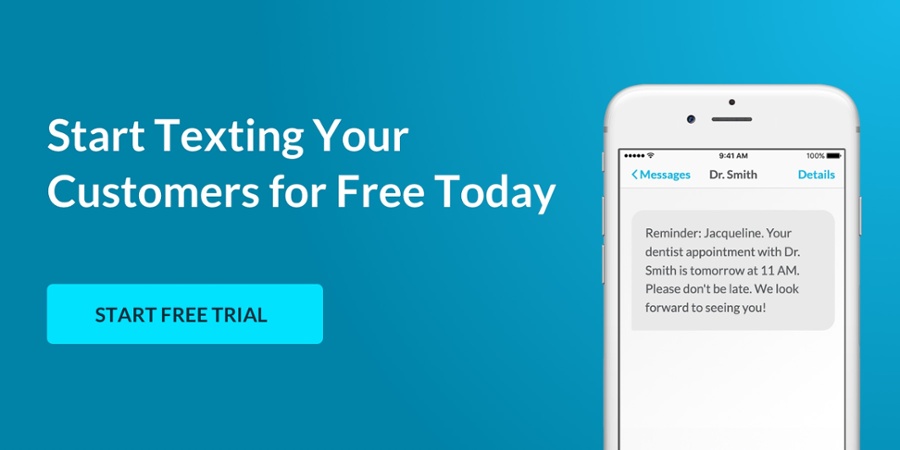People use more independent sources than ever before to learn about companies and their products and services. In fact, the average customer now encounters a business across six different touchpoints before finally pulling the trigger on a purchase. Furthermore, 90% of consumers expect their experience of a brand to be consistent across digital channels—whether that’s social media, text messages or the business’s website.
Your business needs to implement an effective omnichannel strategy to provide the consistent brand experience consumers crave. A thought-out omnichannel marketing strategy meets customers wherever they are with the content they desire. Let’s break this down in detail.
Understanding Omnichannel Marketing
Omnichannel marketing is a recent development that emerged from its predecessor, multichannel marketing. Multichannel marketing, as the name suggests, utilizes a variety of different platforms—generally traditional outlets such as print media in combination with some digital channels—to advertise to consumers.
However, the sheer number and reach of online platforms has expanded well beyond print media. The average person now has over 8 social media accounts. Furthermore, well over 4 billion consumers use email and SMS messaging on a regular basis—and omnichannel marketing aims to reach them across all mediums.
In essence, modern customers are less concentrated in singular areas, such as shopping malls, and instead spread across multiple online spaces. This boom of digital platforms has caused many marketers to rethink the multichannel approach in favor of a strategy that meets consumers wherever they are.
Omnichannel marketing seeks to advertise to potential customers across:
- Social media sites, such as Facebook, X and TikTok
- E-commerce platforms, like Amazon and eBay
- Traditional mediums, like print, television and radio ads
- Other online platforms, such as news and video sharing sites, through the use of embedded ads or sponsored content
- SMS and email
- Physical spaces, such as retail stores
With new digital platforms rising and falling, it’s impossible to meet every consumer at every possible touchpoint. Instead, effective omnichannel strategies focus on those with the highest potential to power conversions and turn casual browsers into committed customers.
The Importance of an Omnichannel Strategy
Omnichannel approaches are the present and future of marketing strategies. They’ve already been shown to significantly outperform single-channel strategies (those in which you advertise via only one avenue, such as email) by garnering nearly four times their engagement. Omnichannel marketing can also increase ad-driven store visits by as much as 80%.
Besides these proven increases in performance metrics, however, omnichannel marketing is simply what consumers have come to expect. To them, this can mean:
- Coupon codes from your social media accounts will work on your e-commerce site
- Items they added to their basket on your website will still be there when they open your app
- The price they see advertised in a banner ad on a news site will be the same when they click through to make the purchase
These are but a few of the expectations that consumers have for contemporary marketers. And, as new demographics rise in purchasing power, these expectations increase. Nearly 90% of Gen Z (born between 1997 and 2012) expect brand experiences in both digital and physical spaces—meaning omnichannel marketers have their work cut out for them in the coming years.
How to Create an Effective Omnichannel Marketing Strategy
The essence of every effective omnichannel marketing strategy is user data. You can’t provide a consistent customer experience across multiple channels without knowing who is using what platform, their preferences and how they interact across other spaces.
Most brands rely on Customer Relationship Management (CRM) software to track user activity across multiple platforms. CRMs identify users and provide them with relevant offers, keep their carts updated and uphold their preferences and settings.
After securing a source of truth for consumer data, be sure to update it regularly, as about 60% of your customer’s information will become outdated in just two years. After ensuring everything is up-to-date, you can utilize your data to reach customers on:
Social Media
The average person now spends over two and a half hours per day accessing social media and, amongst the younger generations, that figure nearly doubles.
In order to capitalize on this increasing reliance on social media, it’s key to utilize the web’s most popular platforms to engage with and advertise to potential customers. Currently, the internet’s most frequented social media sites include:
- Facebook– Over 3 billion monthly users
- YouTube – Nearly 2.5 billion monthly users
- Instagram – 2 billion monthly users
- TikTok – Over 1.2 billion monthly users
- X – 666 million monthly users
Your brand shouldn’t merely be on these platforms, however, it should be actively conversing with users and creating content for them to enjoy. Furthermore, programs like Facebook Ads provide a reliable means of connecting relevant users with your brand, and over 50% of consumers say they're influenced by social media advertisements. So, if it fits into your brand and marketing strategy, consider investing in relevant ad space on your users’ most visited platforms.
E-commerce Platforms
As of 2024, there are more than 2.7 billion digital shoppers spread across the globe who spend well over $6 trillion annually on online purchases.
If you’re an online retailer, you’ll want to get your products on the web’s most frequented e-commerce platforms—like Amazon and eBay—in order to reach this vast swathe of ready-to-buy consumers. In the United States alone, independent retailers move over 4 billion items a year just on Amazon.
Furthermore, consumers trust established e-commerce platforms over other sites. For instance, 92% of consumers would rather purchase from Amazon than another e-retailer. So, if you’re not optimizing your presence on the world’s largest digital marketplaces, you’re missing out on the majority of online customers.
Traditional Mediums
Print and television advertising have both been experiencing somewhat of a Renaissance in recent years. For starters, they’re currently the two most trusted advertising mediums amongst American consumers.
Furthermore, major publications such as The New York Times and Wall Street Journal have noted significant rises in subscriptions over the last couple of years. Likewise, you may be surprised to hear that broadcast and cable television still command higher viewership than streaming services.
Additionally, older adults are the demographic most likely to trust television and print media and least likely to use social media. So, if you don’t reach them there, you’ll likely miss out on most of this key market segment.
Utilizing SMS as Part of Your Omnichannel Strategy
No matter what other channels you choose to prioritize, Short Messaging Service (SMS) must be part of your omnichannel strategy. There are currently almost 7 billion registered smartphones across the globe capable of receiving text messages. Additionally, SMS has a 98% open rate—a figure that far outpaces other messaging mediums, such as email.
To make the most of your SMS campaigns, consider:
SMS Marketing Blasts
An SMS marketing blast is essentially a mass text from your company to a large group of recipients. They should be short, sweet and convincing with a swift call to action encouraging customers to make a purchase, reserve a booking or further explore your offerings.
A clothing retailer, for example, might send an SMS blast reading:
Tempting tags on terrific threads! Today only, select [Brand] winter jackets are going for 50% off. Don’t be left out in the cold! Get yours at [link].
SMS Coupons
Whether you’re rewarding repeat customers or trying to entice users to complete their abandoned purchases, there are many reasons to distribute coupons to your base. SMS makes it easy to target individual customers or similar groups and send them that heralded discount—simply select your lucky recipients and shoot them a code to use during checkout.
For instance, a grocer hoping to recover a customer’s abandoned cart may send a message like:
Don’t let good food go bad! Complete your checkout at [Grocer] in the next hour using code [code] to receive 10% off your purchases. To return to your cart, simply follow this link: [link].
Loyalty Programs
Paper punchcards are out and digital loyalty programs are in. They’re much more reliable because they can’t be faked or forgotten, unlike physical cards. Simply have your customers provide their phone number when making a purchase to credit their account and when they reach a certain purchase amount, reward them with a discount or free item via SMS.
An ice cream parlor, for instance, may send a repeat customer a text like:
Here’s the scoop! You’ve bought ten cones at [Ice cream parlor], so we’re giving you one on the house! Simply show this text to your cashier to redeem your free cone during your next visit.
Alternatively, you can also send your customers a QR code for the cashier to scan if you have the equipment in your business.
Trust Textedly to Optimize Your Omnichannel Strategy with Effective SMS Campaigns
Diversifying your marketing strategy with an omnichannel approach allows you to reach the maximum number of consumers across the most platforms possible. While it’s impossible to fully utilize every channel, you can focus on optimizing the most important mediums for your base—such as social media, e-commerce platforms and, of course, SMS campaigns.
To power your business’s texting efforts, trust Textedly, the all-in-one SMS solution for organizations of all sizes. With Textedly, you can easily generate coupons or QR codes to send out to your customers. Additionally, you can quickly segment your audience based on a variety of factors so that only repeat customers or high spenders get the best discounts.
Best of all, you can have a single dedicated inbox for all your omnichannel marketing efforts.
Try Textedly for free to see the difference a simplified texting solution makes for your business.






.png)